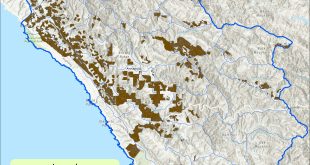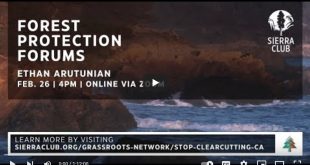Superior Court upholds plan denial
February, 2006
The Superior Court of Mendocino County upheld the California Board of Forestry’s denial of a timber harvest plan in the floodplain of the Gualala River because it was likely to cause harm to endangered coho salmon.
Background
The Cassidy timber harvest plan, submitted by Gualala Redwoods, Inc. in 2000, included approximately 148 acres lying in the floodplain adjacent to the fish-bearing North Fork and Little North Fork branches of the Gualala River.
According to the National Marine Fisheries Service, the Regional Water Quality Control Board and the California Department of Forestry, the Cassidy plan would likely cause harm to salmonid species listed as threatened under the federal Endangered Species Act.
The plan was denied by the California Board of Forestry in February 2002. The following month, Gualala Redwoods petitioned the Superior Court to overturn the Board’s decision. Following a hearing in December 2005, the Superior Court rejected GRI’s petition (see the Court’s decision below).
Meanwhile, in March 2004, Gualala Redwoods filed a new logging plan, the Lily plan, which is almost identical to the Cassidy plan.
Excerpt from the Court’s decision
| Petitioner contends that there isn’t any evidence in the administrative record of likely harm to salmonids. The Court does not agree.
First, the NMFS July 30 letter, and NMFS’ testimony at the hearing before the Board, both establish the likelihood of habitat degradation [emphasis added]. In particular, the NMFS letter states that excess channel bed load poses an “immediate risk” to increased flood frequency and inundation depth such that meander cutoff and channel abandonment by the river system may occur resulting in channel incision and general floodplain and valley degradation. (AR 990.) Similarly, Charlotte Ambrose, a natural resource specialist with the Protected Resources Division of NMFS, opined at the hearing that the proposed timber operations would cause significant habitat modifications, including decreased large wood recruitment, increased sediment delivery, increased mass wasting potential, increased peak flows, and decreased channel complexity. (RT, at p. 19.) Ms. Ambrose concluded that the proposed harvesting activities will combine with the accumulation of ongoing and previous timber operations and result in further significant modifications of salmon habitats. (RT, at p. 12.) Dr. Brian Clue[r], a fluvial geomorphologist/hydrologist also submitted testimony on behalf of NMFS, and he too concluded that approving the THP would contribute to further degradation of stream channels and fish habitat. (RT, at p. 37-38.) Second, there is evidence in the record that the likely habitat degradation is reasonably certain to harm coho salmonid [emphasis added]. (See RT, at p. 22 et seq.) Among other things, Ms. Ambrose opined that conifer removal and channel aggradation reduces channel complexity (loss of pool formation and sediment sorting), which in turn, impairs salmon rearing, sheltering, feeding, spawning, and migration. The loss of cool water refugia in the river further harms coho due to inefficient feeding, thermal stress, increased susceptibility to disease, reduced competitive vigor and/or death. High sediment input reduces egg-to-fry emergence by suffocating eggs and entombing alevins, and by filling refugia areas and shifting macro invertebrate communities, which are a food source of coho. Increased turbidity from sediment input decreases feeding ability and increased gill abrasion. Further, extremely high sediment delivery results in direct mortality to coho eggs and alevins by washing them downstream, smothering them or entombing them. (RT, at pp. 22-23; see also RT, at p. 31.) For these reasons, the Court concludes that there is substantial evidence in the record to support the finding that a take* would occur… |
*Note: definition of “Take”
Section 895.1 of Title 14 of the California Code of Regulations defines “take” to mean “to harass, harm, pursue, hunt, shoot, wound, kill, trap, capture, collect, or to attempt to engage in any such conduct with regard to a federally listed wildlife species.” (14 CCR ¤ 895.1.) That section also defines “harm” to mean “an act where it actually kills or injures a federally listed wildlife species. Such acts may include a significant habitat modification or degradation which actually kills or injures wildlife by significantly impairing essential behavior patterns, including breeding, feeding or sheltering.” (Id.)
 Friends of Gualala River Protecting the Gualala River watershed and the species living within it
Friends of Gualala River Protecting the Gualala River watershed and the species living within it


